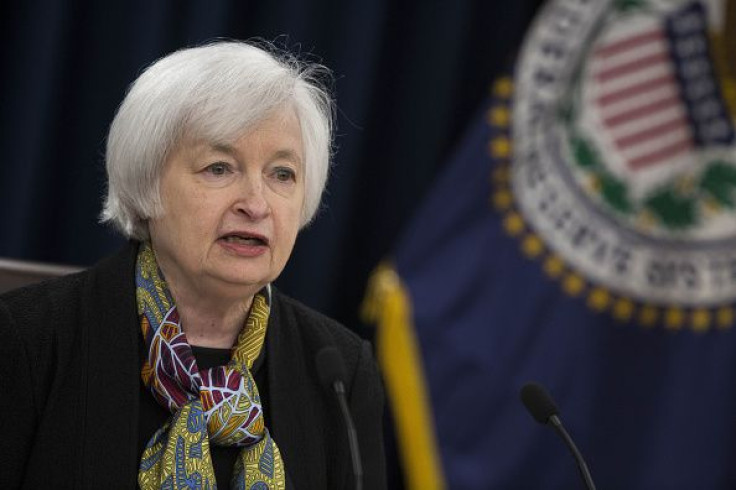Fed Meeting: Janet Yellen Holds Rates Steady, Settles Into Lower-For-Longer Outlook

The Federal Reserve put interest rates on hold Wednesday, as expected. What was less expected were the shifts in Fed officials' medium-term projections for growth in the American economy.
Members of the Federal Open Markets Committee projected just two increases in benchmark interest rates in 2016, half the number Fed officials had expected in December, when the Fed lifted its benchmark rate for the first time since 2006. The economic growth forecast for 2016 was notched down to an annual 2.2 percent rise in gross domestic product, from 2.4 percent in December.
“Most committee participants now expect that achieving economic outcomes similar to those anticipated in December will likely require somewhat lower interest rates,” Fed Chair Janet Yellen told reporters Wednesday after the two-day meeting of Fed governors and regional bank presidents. The officials saw the Fed's benchmark interest rate as topping out at 3.3 percent past 2018, compared to 3.5 percent expected in December.
In sum, Yellen described the economy as healthy, with labor markets moving toward full employment and household spending strong. But the Fed's moderated expectations reflect a growing acceptance by policymakers of a new normal marked by slower growth and lower long-term interest rates. Fed officials seem to have become accustomed to the lackluster growth and financial risks stemming from overseas.
In a passage wholly new to the Fed's policy statement — which generally only includes minor wording changes between meetings — officials noted that “global economic and financial developments continue to pose risks.” Gone was phrasing that the risks to the economic outlook were “balanced.”
“We decided not to describe the balance of risks as weighted to the downside,” Yellen told reporters, suggesting that the members differed on their analysis of how pressures stacked up against the U.S. economy.
With all this taken together, Fed-watchers saw a surprisingly timid outlook from the nation's central bank. “The Fed didn’t exactly tee things up for a rate hike at the next meeting,” Bankrate.com chief financial analyst Greg McBride said, noting that recent measures of inflation have bounced upward. “If inflation continues to pick up, the Fed will have some serious jawboning to do.”
Yellen noted that these inflation moves may be transitory. Oil prices have fluctuated after a long slide, and the U.S. dollar continues to gain strength against currencies where policymakers are still pushing interest rates down, as in Europe and Japan. It was too early to determine whether those factors, which have weighed heavily on domestic inflation, have passed, Yellen said.
But as former Minneapolis Fed President Naranya Kocherlakota suggested Wednesday, the Fed's inflation projections might have greater significance than most people realize. In a Bloomberg View article written just after the release of the Fed data, Kocherlakota noted that the plots that chart Fed officials' projections don't reflect the policymakers' expectations, but rather their goals.
“If, for example, the median projection for inflation in 2018 is 2 percent, we can conclude that the median policymaker is aiming to return inflation to 2 percent by the end of that year,” Kocherlakota wrote. Since the market's inflation expectations actively affect the actual course of inflation, as Yellen has long emphasized, the Fed's diminished projections suggest that policymakers want price gains to remain sluggish.
“Inflation has been stuck below the Fed's target in part because officials don’t actually want to get it back up,” Kocherlakota wrote. If that's the case, Americans can expect interest rates to remain well below the historical norm for quite some time to come.
© Copyright IBTimes 2024. All rights reserved.












